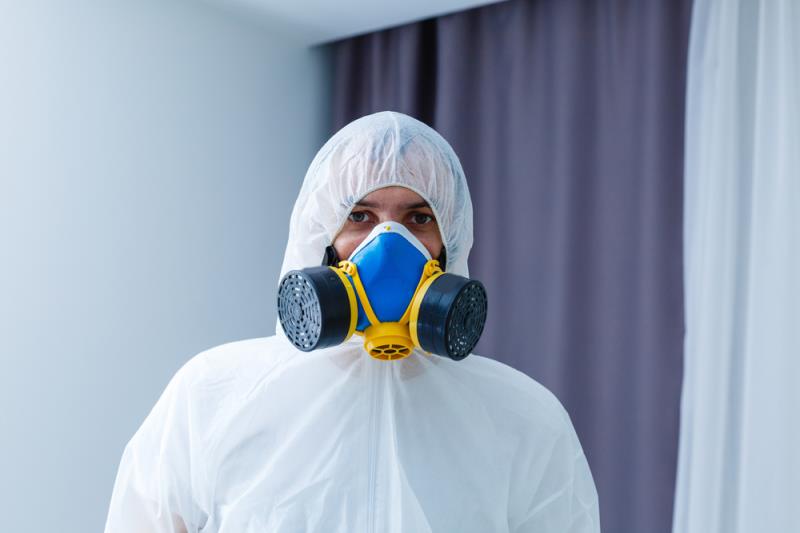
As healthcare professionals battle with the coronavirus disease 2019 (COVID-19) pandemic under global shortages of disposable N95 respirators and other protective equipment, researchers have evaluated the feasibility of rapid fit testing and training for the use of elastomeric half-mask respirators (EHMRs) as an alternative, with promising results.
The outbreak simulation study, conducted at Emory University in Atlanta, Georgia, US, and University of Texas Health Science Center in Houston, US, involved 153 healthcare workers (mean age, 38 years; 77 percent female) who were randomized to the EMHR group (n=124) or N95 group (n=29) for rapid fit testing and training. Participants in both groups were trained using a 9-minute video, while those in the EMHR group were assessed three times consecutively for 26 performance indicators covering inspection, donning, positive-pressure and negative-pressure user seal check, doffing, and disinfection. [JAMA 2020, doi: 10.1001/jama.2020.4806]
Results showed that 92.2 percent of participants in the EMHR group passed fit testing in the first attempt, with no significant difference compared with the N95 group (88.5 percent; p=0.76). All participants passed fit testing by the third attempt.
The mean time to complete fit testing was 6 minutes 47 seconds in the EHMR group compared with 6 minutes 29 seconds in the N95 group (p=0.48).
“The participants’ performance scores for EHMR use improved significantly from the first attempt to the second attempt overall and in all areas,” the investigators reported.
Most participants of the study were nurses (41.1 percent in the EHMR group vs 41.4 percent in the N95 group), followed by physicians, physician assistants or nurse practitioners (16.1 percent vs 13.8 percent), and respiratory therapists (12.9 percent vs 24.1 percent). The participants mainly worked at medical or surgical units (25.8 percent vs 13.8 percent), emergency departments (21.8 percent vs 13.8 percent), and intensive care units (26.6 percent vs 37.9 percent).
Overall, 87 percent of the participants had at least 1 year of experience wearing a respiratory protective device. In the EHMR and N95 groups, 9.7 percent and 27.6 percent of participants, respectively, had no prior experience in wearing respirators. Only 1.3 percent of participants had prior experience in the use of EHMRs.
“Concerns are growing over global shortages of respiratory protective devices during the COVID-19 pandemic. A reusable alternative to N95 respirators for which healthcare personnel can be rapidly assessed for fit and trained for use is needed,” the investigators wrote. “EHMRs, which provide the same level of respiratory protection as N95 respirators, are one alternative. These reusable respirators are used in construction and manufacturing, but not widely used in health care because of uncertainty about disinfection methods and upfront costs.”
“Our study showed that healthcare personnel can be rapidly fit-tested and trained to use the reusable EHMR. Time to achieve fit with EHMRs was not significantly different than with N95 respirators. High EHMR performance was demonstrated,” they noted.
While limitations of the study included the simulated emergency, small number of participants, and lack of data on actual use of EHMRs, the investigators concluded that EHMRs may serve as a suitable alternative to disposable N95 respirators during public health emergencies when used under an occupational safety and health administration respiratory protection programme.
“Better understanding about the efficacy and feasibility of disinfection methods [for EHMRs] are key,” they added.